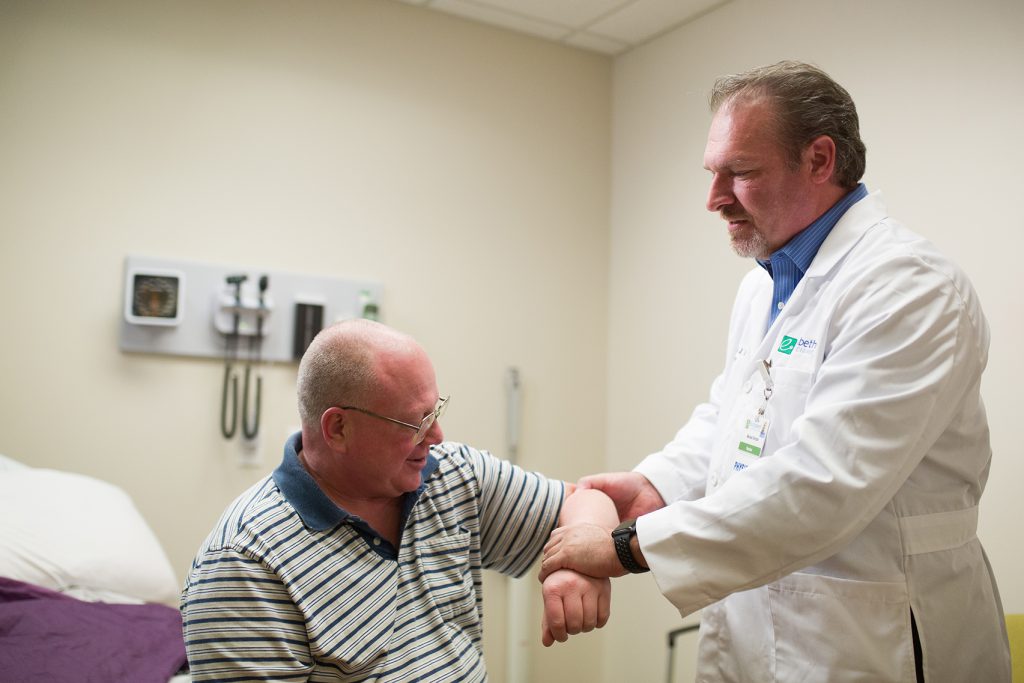Platelet Rich Plasma or PRP is created using your own blood that is separated out to remove the red and white blood cells and retain the platelets which are rich in growth factors. This solution, when injected into damaged tissue, can help promote healing and stop degeneration.
Today, PRP injections are used to help relieve pain caused by ligament and tendon injury and osteoarthritis. Dr. Michael Bertram, a board-certified Physician of Physical Medicine and Rehabilitation (also called Physiatry) says, “PRP injections are different than other injections used to relieve pain because it is a potentially longer-term more permanent solution compared to steroid injections that tend to wear off quickly. It can help slow down the degenerative process and help you avoid surgery or joint replacement. It also helps get you out of pain and restore function.”
PRP can benefit patients with a variety of different ligament, joint and tendon issues.
Dr. Bertram explains the process to create the injection, “Your blood is drawn in the office, then it is processed for about 20 minutes in a centrifuge which spins the blood at high speeds and separates out the layers. We preserve high concentrations of platelets and growth factors, which are then injected into the injured area to promote the damaged tissue to heal.”
How Do Platelet Rich Plasma Injections Work?
The entire process from beginning to end, takes approximately one hour. First the blood is drawn and the PRP injection is created. Then, ultrasound is used to deliver the injection to the precise location of injury or damage.
Typically, anywhere from two to six injection treatments are given. The longer the duration of the pain or the more severe the injury, the more treatments will be needed. After the first treatment, you may receive repeat injections at four to six weeks.
Dr. Bertram explains the healing process, “The first step in healing is inflammation. This step increases blood flow and helps remove unhealthy tissue. Then fibroblastic phase, which helps form new blood vessels, cells and new collagen. The last phase is maturation, when the tissue becomes stronger and healthy.”
The injections don’t offer immediate relief of pain. Most patients feel some effects of the healing tissue in as little as two weeks. Significant relief is not noticed usually until four to six weeks after the first treatment. Full healing comes over months.
PRP is a non-surgical option for patients who are struggling with chronic pain or limited mobility. To learn if PRP is an option for you, give us a call at (859) 957-0052 to schedule an appointment.

